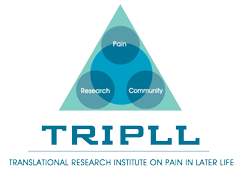Concerns surrounding harmful side effects and medication interactions associated with prescription medications has led to increasing support of the use of OTC medications and nonpharmacological multimodal therapies to treat chronic musculoskeletal pain.
Musculoskeletal pain is a common occurrence affecting many older adults. It is estimated that one in four older adults will suffer chronic nonmalignant musculoskeletal pain. With the increase in the geriatric population (35 million people who are aged 65 and older), the number of individuals suffering from musculoskeletal pain has grown exponentially.1 In light of this trend, it is extremely important to have a pain management strategy that helps to decrease patients’ suffering and disability.
Excerpted from an article by by Rosemary Laird, MD, MHSA, AGSF, a geriatrician, executive medical director of senior services for Florida Hospital at Winter Park, and past President of the Florida Geriatrics Society, and Ashish R. Udeshi, MD, an interventional pain specialist with Florida Pain Institute in Merritt Island, and board-certified anesthesiologist. Today’s Geriatric Medicine, Vol. 9 No. 2 P. 10, 2016. To read the full article, click here.
